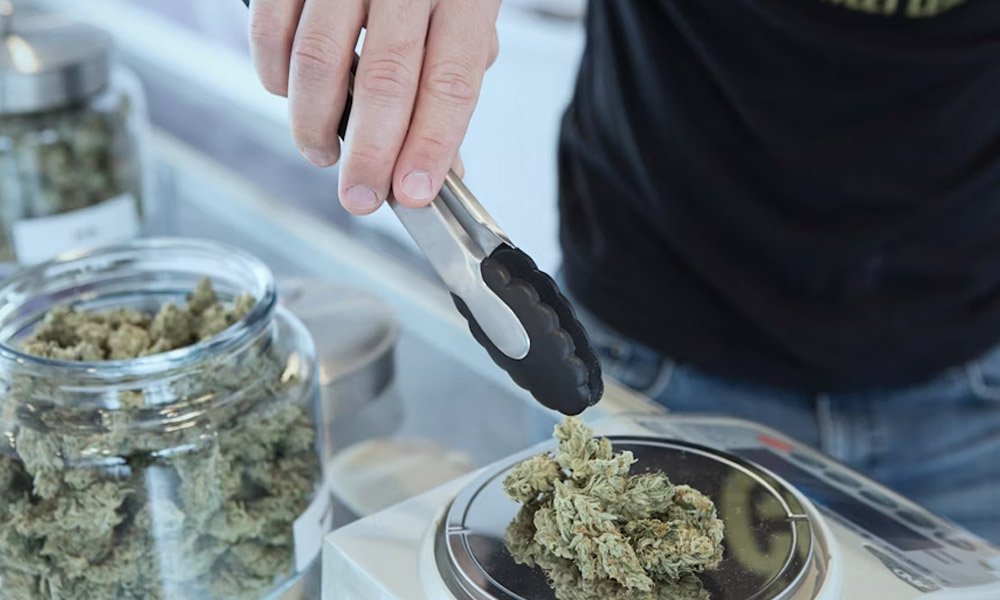Guide
Building a Successful Cannabis Grow: Where Most People Start Wrong
Published
17 hours agoon
By
Alexander
Cannabis growing attracts plenty of people who jump in without proper preparation. The plant’s reputation for being easy to grow creates false confidence. Someone reads a few guides, watches some videos, buys seeds and basic equipment, and starts growing with the assumption that things will work out fine. Then reality hits—plants struggle, problems appear that weren’t anticipated, yields disappoint, and the whole experience feels harder than it should have been.
The issue isn’t that cannabis is difficult to grow. The plant is remarkably forgiving and will produce something even with mediocre care. The problem is that most beginners make predictable mistakes in how they approach the process from the start. These errors create unnecessary difficulty and prevent grows from reaching their potential. Understanding where people typically go wrong helps avoid the frustration of learning these lessons the expensive way.
Success in cannabis growing isn’t about having perfect knowledge or ideal conditions. It’s about getting foundational decisions right, avoiding major mistakes that create ongoing problems, and having realistic expectations about the learning process. Most failed or disappointing grows can be traced back to poor choices made before seeds even germinated.
The Seed Selection Mistake
Choosing seeds is where many grows go wrong before they start. People select genetics based on appealing strain names, high THC percentages, or whatever looks interesting without considering whether those genetics suit their growing conditions and skill level. This mismatch between plant needs and available resources creates problems that persist throughout the entire grow.
A strain that grows 8 feet tall doesn’t work in a 5-foot space regardless of how appealing it sounds. Fast-finishing genetics matter for outdoor grows in regions with short summers. Mold-resistant varieties are essential in high-humidity environments. Beginner-friendly genetics make more sense for first grows than finicky strains requiring expert care. These considerations should drive seed selection, not just which strain has the highest THC or coolest name.
The other seed mistake is buying from questionable sources to save money. Poor genetics doom grows from the start through low germination rates, unstable traits, or plants that don’t match descriptions. Starting with quality seeds from established sources like Best Cannabis Seeds eliminates genetic problems as a variable, allowing growers to focus on developing skills rather than fighting plants that were never going to perform well. The small savings from cheap seeds rarely justify the disappointment of poor results.
Space and Location Problems
Choosing where to grow without carefully evaluating the space creates persistent problems that can’t be easily fixed later. Someone picks a closet because it’s convenient, then discovers it has terrible ventilation and overheats constantly. Or selects an outdoor spot that seems fine but gets too much shade or is visible to neighbors. These location issues affect every aspect of the grow and often can’t be corrected without significant additional expense or moving the entire operation.
Proper space evaluation means honestly assessing available room, light conditions, access to power and water, ventilation options, privacy, and environmental control possibilities. A space needs adequate size for planned plant numbers plus equipment. It needs environmental conditions that can be managed to suitable ranges. It needs enough privacy to avoid creating problems with neighbors or unwanted attention.
Many beginners underestimate space requirements. Plants need room to grow, but so does equipment—lights, fans, ducting, containers all consume space. Add the room needed to actually access plants for watering and maintenance, and space requirements exceed what people initially expect. Planning for actual space needs rather than ideal minimum dimensions prevents cramped grows that are difficult to maintain.
Equipment Decisions Made Poorly
Equipment purchases often go wrong in two opposite directions. Either someone buys the cheapest options available to minimize costs, or they go overboard with expensive equipment that exceeds their needs and skill level. Both approaches waste money—one through buying inadequate gear that must be replaced, the other through spending unnecessarily on features that don’t improve results for beginners.
The balanced approach involves identifying essential equipment that must be quality, versus areas where budget options work fine. Lighting deserves investment because inadequate lights guarantee poor results. Proper ventilation isn’t optional for indoor grows. pH testing equipment needs to be reliable. But expensive nutrient systems with fifteen bottles provide no benefit over simple two-part formulas for beginners. Premium pots and containers don’t grow better plants than basic options.
The other equipment mistake is buying based on marketing rather than actual needs. Someone growing two plants doesn’t need a commercial-grade exhaust system. A tent suitable for four plants costs less than one designed for eight. Equipment should match actual growing scale rather than aspirational plans that may never happen.
Knowledge Gaps and Learning Approach
Starting to grow without adequate foundational knowledge creates problems that could have been prevented with a few hours of research. People encounter issues they can’t identify, make interventions that worsen situations, and generally learn through expensive trial and error rather than building understanding first.
This doesn’t mean becoming an expert before starting—that’s impossible. But understanding basics about plant needs, environmental requirements, common problems, and how to respond to issues provides the framework for making better decisions when situations arise. The difference between knowing that overwatering causes root problems versus not knowing that at all determines whether someone can correct course or continues making plants worse while trying to help.
The learning approach matters too. Some people research obsessively and never actually start growing because they’re waiting to know everything. Others jump in with minimal preparation and hope for the best. The middle ground involves building foundational knowledge, starting with a manageable first grow, and learning through observation and experience rather than either extreme.
Reliable information sources make a difference. Cannabis growing advice varies wildly in quality, and beginners often can’t distinguish good guidance from bad. Established forums, reputable books, and educational content from seed companies and equipment manufacturers tend to be more reliable than random social media posts or dubious websites promising miracle techniques.
Timeline and Expectation Problems
Unrealistic expectations about how quickly results appear lead to disappointment and poor decisions. Cannabis grows take months from seed to harvest—typically 3-6 months depending on genetics and methods. Someone expecting quick results in 6-8 weeks will be frustrated and may make hasty changes or give up before plants even finish.
The timeline includes germination, vegetative growth, flowering, drying, and curing. Each stage takes time and rushing any of them reduces final quality. Harvesting too early because impatience wins over patience is a common mistake that wastes months of work for underwhelming results.
Yield expectations also need reality checks. First grows rarely produce the yields that breeders advertise or experienced growers achieve. Expecting 200 grams from a first plant when 50-75 grams is more realistic for beginners leads to disappointment with results that are actually fine for a first attempt. Setting appropriate expectations prevents discouragement when outcomes are good but not exceptional.
Budget Reality and Cost Planning
Underestimating total costs creates financial stress and tempts people to cut corners that hurt results. The visible costs are seeds and equipment, but ongoing expenses add up—electricity for lights and ventilation, nutrients throughout the grow, growing medium, water, replacement parts when equipment fails. These costs continue throughout the grow cycle.
Planning budget realistically means accounting for all expenses from start to finish, not just initial setup. Someone who budgets $500 for equipment but doesn’t plan for $50-100 monthly in ongoing costs runs into problems mid-grow when money gets tight. Either the grow gets neglected, corners get cut on nutrients or supplies, or unexpected costs create financial pressure.
The other budget mistake is not considering the value proposition honestly. Growing cannabis costs money and time. For some people in some situations, the economics work out favorably compared to purchasing alternatives. For others, the math doesn’t justify the investment. Being honest about whether growing actually makes financial sense prevents disappointment when realizing that home growing costs more than expected while producing less than hoped.
Environmental Control Overlooked
Environmental conditions—temperature, humidity, air circulation—matter more than many beginners realize. Cannabis grows across a range of conditions, but staying within optimal parameters significantly affects results. The mistake is assuming that any space will work without verifying whether it can actually be controlled to suitable ranges.
Heat becomes a major issue with indoor grows. Lights generate significant heat, and without adequate ventilation, temperatures climb to levels that stress plants and reduce growth. Simply adding lights to a space without planning for heat management creates problems from day one. The same applies to humidity—some spaces naturally stay too humid or too dry, and managing this requires equipment and attention that beginners often don’t anticipate.
Air circulation matters beyond just temperature and humidity control. Stagnant air encourages mold and pest problems while limiting gas exchange that plants need. Proper airflow requires fans beyond just exhaust systems, but this often gets overlooked in initial planning.
The Approach That Actually Works
Successful cannabis growing starts with honest assessment of available resources, careful selection of appropriate genetics, adequate research before starting, realistic expectations about timelines and results, and willingness to learn from both mistakes and successes. This foundation prevents the major errors that make grows unnecessarily difficult or lead to disappointing outcomes.
The goal isn’t perfection on the first attempt. It’s avoiding the predictable mistakes that create ongoing problems while setting up conditions where reasonable care produces satisfying results. Starting wrong makes everything harder. Starting with a solid foundation makes the learning process manageable and results achievable.
You may like


Defensive Driving Course New Jersey

Smart Policies for Google Drive File Management: Retention, Labels & Automation

5 Best Sites to Buy Google Reviews Of 2025 (Real & Non- Drop)

Choosing the Perfect Ballet Shoes: A Guide for Young Dancers

Essential Guide to Molicare Pads: Comfort and Care Solutions

Unlocking Radiant Skin: The Benefits of LED Light Therapy

Building a Successful Cannabis Grow: Where Most People Start Wrong

How Cosmetic Dentistry Transforms Lives

Top 5 Best Advertising Agencies in UAE for Effective Brand Promotion

Improving Connection in the Workplace

Carol Kirkwood’s Journey: Her Real Age, Husband, Career, and More

Revolutionizing Healthcare: The Emergence of AI-Driven Analytics

How Machine Learning and AI are Redefining the Future?

Aliza Barber: Meet Lance Barber’s Wife, Age, Life, Profile, Career and Net Worth

Evelyn Melendez: Jordan Knight’s Wife Bio, Marriage, Family, Career and Net Worth

Ilan Tobianah Biography: Family, Marriage, Lifestyle, Career and Net Worth

Who was Alice Marrow? Everything to Know About Ice-T’s and His Mother

King Von’s Autopsy Report: The Truth Behind the Tragic Death

Meet Otelia Cox: The Supportive Wife of Tony Cox – A True Fairy Tale Romance

Tea Leoni and Tim Daly Split – A Closer Look at Their Relationship and Breakup

Defensive Driving Course New Jersey

Smart Policies for Google Drive File Management: Retention, Labels & Automation

5 Best Sites to Buy Google Reviews Of 2025 (Real & Non- Drop)

Choosing the Perfect Ballet Shoes: A Guide for Young Dancers

Essential Guide to Molicare Pads: Comfort and Care Solutions

Unlocking Radiant Skin: The Benefits of LED Light Therapy

Building a Successful Cannabis Grow: Where Most People Start Wrong

How Cosmetic Dentistry Transforms Lives

Top 5 Best Advertising Agencies in UAE for Effective Brand Promotion

Improving Connection in the Workplace
Category
Trending
-

 News2 months ago
News2 months agoCarol Kirkwood’s Journey: Her Real Age, Husband, Career, and More
-

 Health2 years ago
Health2 years agoRevolutionizing Healthcare: The Emergence of AI-Driven Analytics
-

 Technology2 years ago
Technology2 years agoHow Machine Learning and AI are Redefining the Future?
-

 Celebrity2 years ago
Celebrity2 years agoAliza Barber: Meet Lance Barber’s Wife, Age, Life, Profile, Career and Net Worth
